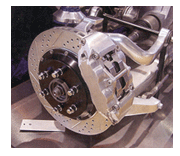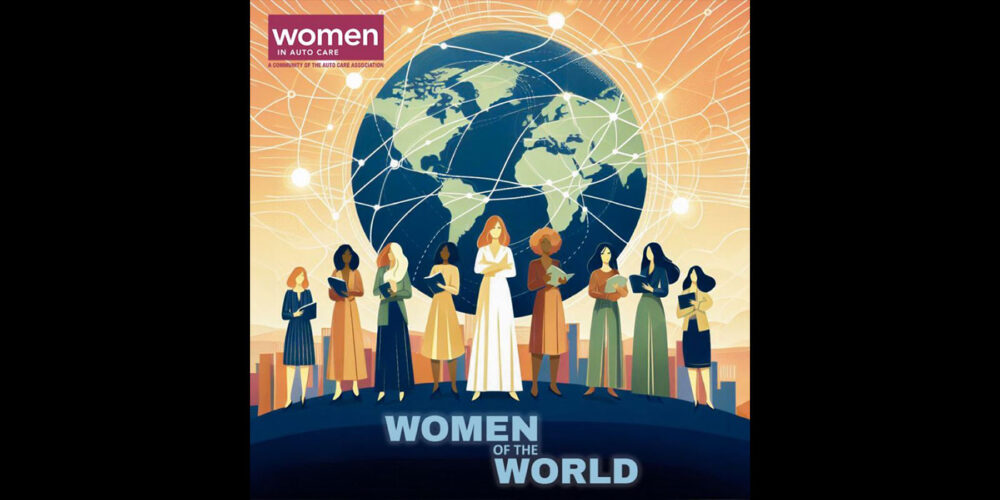There is no such thing as a perfect single formula when it comes to brakes. But in order to steer customers in the right direction, your recommendations should fit your customer’s concerns perfectly.
As you participate in undercar courses, you are no doubt learning that when a vehicle needs brakes, there are different brands of linings, different grades of friction materials, and different levels of quality from which to choose. For a given application, you may find there are a half a dozen or more choices listed in the brake catalog or database. So as you make the move from student to sales person or technician, which one should you recommend to a potential customer?
Pretty Spiffy
 Some countermen we have spoken to say their first choice is the brand or type of lining that is currently offering the best giveaways or spiffs. There’s nothing wrong with that – provided the linings are a good match for the type of driving the customer does and meets the customer’s noise, performance and longevity expectations. But every brake job is unique as is every customer. So don’t be too quick to recommend a particular brand or type or grade of lining. Find out what the customer needs and wants, then make your recommendation – and if you get a few spiffs in return, great!
Some countermen we have spoken to say their first choice is the brand or type of lining that is currently offering the best giveaways or spiffs. There’s nothing wrong with that – provided the linings are a good match for the type of driving the customer does and meets the customer’s noise, performance and longevity expectations. But every brake job is unique as is every customer. So don’t be too quick to recommend a particular brand or type or grade of lining. Find out what the customer needs and wants, then make your recommendation – and if you get a few spiffs in return, great!
Learn the Customer’s Driving Styles
Someone who drives a big Chevy Suburban and tows a boat or horse trailer on the weekends is a different kind of brake customer than someone who commutes back and forth to work on the open highway in a Kia Rio. Soccer moms, teenagers, commuters, traveling salesmen and retirees all have different driving patterns and styles. Some rack up a lot of miles in a relatively short period of time while others drive much less. Some are aggressive and are always on the brakes while others take it easy and use their brakes judiciously.
How a vehicle is used and how it is driven have an enormous impact on brake life. The brakes on vehicles that are driven in heavy stop-and-go commuter traffic get hot and usually experience more wear than those on vehicles which are only used for errands or highway driving. Hilly terrain and winding mountain roads will also make the brakes work harder and run hotter, too. Vehicles that are heavy, driven hard and are subjected to frequent or prolonged braking can really eat up linings. Wear is a function of heat. So the hotter the pads run, the faster they wear every time the brakes are applied.
Good, Better, Best Lines
For hard-use applications, premium-grade replacement linings are usually best. Premium-grade replacement linings generally provide better wear than standard-grade linings, and certainly much better wear than-economy grade linings. Premium linings also tend to perform better in terms of stopping distance, fade resistance, pedal feel and noise control. As a rule, premium linings will restore the “like-new” feeling and performance that makes most customers happy. Brake suppliers use different grades of friction materials in their economy, standard and premium product lines – and the prices vary accordingly.
Economy linings are for bargain-shoppers who want a quick fix and little else. Economy linings should never be installed on a vehicle that has a history of eating pads or is obviously a hard-use application. Economy linings will not provide the same durability as standard- and premium-grade linings, and may not feel, sound or stop the same as the OEM linings. Economy product lines typically use only a few friction formulas, or even a “one-size-fits-all” formula. But in the real world, one-size-fits-all fits some better than others. There are always compromises because of differences in vehicle platforms, braking systems, weight and usage.
Standard linings, by comparison, are for normal duty users, and provide good value for the money. They may or may not use the same basic type of friction material as the OEM linings, but they generally provide satisfactory performance.
Premium linings, by comparison, typically use a greater variety of friction formulas for different vehicle applications. This may be called “application-engineered” or “application-specific” lining selection. The product engineers who develop and choose the friction materials try to closely match the braking performance, feel and noise qualities of the original equipment linings and the vehicle platforms they come on. Their goal is to “equal or exceed” OEM braking performance. Premium linings cost more because of this, but also generate fewer comebacks because of noise, pedal feel and performance complaints.
Friction Fiction
One very important point to keep in mind about aftermarket friction materials (even application-specific friction) is they are not necessarily the same as the OEM linings – but they will be close.
There are literally hundreds of different friction formulas in use on vehicles today ranging from high content ceramics to low-metallics to semi-metallics to nonasbestos organics. The exact recipes are all proprietary secrets shrouded with mystique. Consequently, there’s no way to know what exactly is in a set of brake linings beyond what the supplier tells you on the box or in its advertising.
Friction Recipes?
For more than a decade, “ceramic”fibers have been used as an ingredient in OEM brake linings. Ceramic fibers are a good choice for brake linings because they have stable and predictable friction characteristics, more so than most semi-metallic materials which are very good at handling high brake temperatures, but do not deliver their maximum performance until they get hot.
Ceramics provide a consistent pedal feel that is the same whether the pads are hot or cold because the coefficient of friction doesn’t drop off as quickly as semi-metallics. NVH (noise, vibration & harshness) is also less with ceramics, so the brakes are significantly quieter – and kinder to rotors, too.
Low dust is another desirable characteristic of ceramics. The color of the dust given off by a high ceramic content linings is typically a light gray and is less visible on wheels (unlike some NAO and low-metallic friction materials that produce a dark brown or black dust that clings to wheels).
Ceramic compounds can be very complex and may use as many as 18 to 20 different ingredients in a formula, including various fillers and lubricants that are added to help dampen vibrations and noise. Some ceramic formulas may contain up to 30 percent iron to help dampen noise while others use little or no iron.
Ceramic brake pads are typically marketed as premium-quality linings. Even so, they may not be the best upgrade for some applications.
Ceramic linings are a good choice for passenger car applications where a customer wants first-class braking performance, low noise and little to no dust. But for heavier vehicles such as large SUVs and trucks that may be used for towing or hauling heavy loads, semi-metallics are generally a better choice. Why? Because brake temperatures are higher and semi-metallics linings typically handle heat and wear at elevated temperatures better than ceramic linings.
Something else to keep in mind is that the word “ceramic” has no standard industry definition. It is a buzzword that is overused and sometimes abused. There are different types and shapes of ceramic fibers. Which fibers are used and how they are combined with other ingredients determines the noise, wear and braking characteristics of the friction material. Some brake suppliers use high ceramic content friction formulas while others use “ceramic enhanced” formulas that only add a dash of ceramic to an existing conventional formula.
Confused? Many techs are. So until there is some industry standard definition of what exactly a ceramic brake lining is, the best advice is to recommend name brand linings and follow the supplier’s recommendations for substituting ceramic-based linings for other types.
Hot ‘N Heavy
Most brake suppliers also offer a “severe-duty” or “heavy-duty” brake line that’s a step up from their premium product line. Typical applications include fleet vehicles, taxis, police cars, limos, ambulances, vehicles used for heavy towing and hauling and street performance cars. These are all applications where the brakes run hot and work hard. The linings that work best in these kinds of applications are usually high temperature semi-metallics with a high percentage of steel or iron content.
Sustained high brake temperatures of 400 F to 500 F (which can occur when the driver constantly rides the brakes in heavy traffic) are actually harder on brake linings than peak temperatures that may shoot up to 600F to 800 F momentarily, but only remain there for a brief period of time. Brake wear is directly proportional to brake temperature, so the hotter the brakes get – and the longer they remain at elevated temperatures while braking – the faster the linings wear. Semi-metallic friction materials with a high iron or steel content can handle heat much better than ceramics, low-metallics and nonasbestos organic (NAO) materials. Semi-metallics will wear less and fade less as brake temperatures rise. But the trade-off to switching to a semi-metallic may be increased noise and rotor harshness. And strangely enough, wear may even be greater with a semi-metallic if the brakes never get hot enough to break-in the pads or to push the pads into their intended temperature range. So don’t recommend heavy-duty semi-metallics for a vehicle that doesn’t really need them.
Another upgrade you might recommend is drilled and slotted rotors. These are a popular appearance add-on with owners of sports compact cars and street performance cars and light trucks. They look hot and also improve cooling to reduce heat fade and wear. If the rotors have to be replaced anyway because of wear, upgrading to slotted and drilled rotors may help the brakes last longer.











